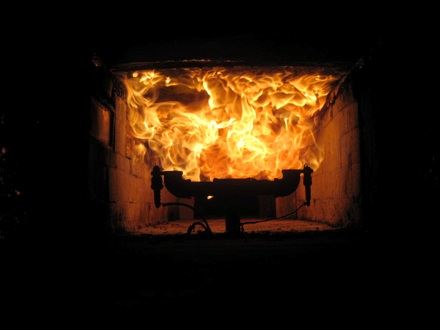US study finds health and environmental risk in building insulation
Press Release – Building Research and Information [Volume 40, Issue 6]
Date of issue: 23/11/2012
Read the article at: www.tandfonline.com/doi/full/10.1080/09613218.2012.744533
Article publication date: 26/11/2012
EMBARGOED UNTIL: 26/11/2012
Researchers in the United States are calling for a change to the US building codes, following a study showing that the mandatory flame retardants routinely added to foam insulation are not only harmful to human health and the environment, but also make no difference to the prevention of fire in buildings where a fire-safe thermal barrier already exists. Such a change would bring the US building codes in line with regulations in Sweden and Norway.
The research team, which is drawn from US-based centres of excellence including the University of California and the Lawrence Berkeley National Laboratory, conducted a thorough review of fire safety literature since the mid-1970s and conclude that the addition of halogenated organic compounds to plastic insulation materials such as polystyrene, polyisocyanurate and polyurethane is costly, ineffective and environmentally damaging. Their conclusions are published in the latest issue of the journal Building Research and Information.
Led by internationally renowned fire expert Dr Vytenis Babrauskas of Fire Science & Technology Inc., the research team investigated the impact of the “Steiner Tunnel test”, which is used to test the propagation of fire over the surface of all sorts of building materials in the early stages of fire (before flashover point is reached). Their paper suggests that changing the US building codes to exempt foam plastic insulation materials from the test would avoid the use of thousands of tonnes of flame retardants that are known or suspected to be persistent organic pollutants. They conclude:
“Such a change would … decrease the cost of foam plastic insulation and encourage the use of insulation materials for increasing building energy efficiency and mitigating climate change. The potential for health and ecological harm from the use of flame retardant chemicals would be reduced and the fire safety of buildings would be maintained.”

The Steiner Tunnel test, showing the flame being applied to the ceiling, is an inadequate and inappropriate method for testing insulation safety. Photo: IntertekTesting Services Inc.
Their article begins with a review of the development of the US building codes in relation to fire safety, and foam insulation in particular, and explains that foam plastics used for insulation have required a thermal barrier (usually 12.7 mm (1/2 inch) thick gypsum wallboard) since 1976. In addition, chemicals such as hexabromocyclododecane (HBCD) and Tris (1-chloro-2-propyl) phosphate (TCPP) are routinely added in order to meet the requirements of the Steiner Tunnel test. The building codes have never stipulated that chemicals be added to foam plastic insulation, however doing so is the most common way to meet the Steiner test. These additives are semi-volatile organic compounds (SVOCs) which do not bind to the insulation material and are known to be released into the environment throughout the life cycle of insulation. The chemicals can persist and accumulate, and have been implicated in thyroid hormone disruption and nervous system development problems and are potentially carcinogenic.
The experts suggest that exempting foam plastic insulation materials from the Steiner Tunnel test would mean there was no longer a need to add these flame retardants.
As well as presenting a detailed analysis of the problems associated with the Steiner Tunnel test, the article reviews the:
• Adequacy of the thermal barrier
• Fire propagation into a cavity constructed in violation of codes
• Behaviour of exposed foam insulation installed in violation of codes.
The article also discusses alternative courses of action, including the possible development of a more accurate test, the use of different flame retardant chemicals and a range of options for mitigating the impact of the flame retardants currently used.
Finally, the article says that such an action would not be without precedent. Flame retardants were once routinely added to children’s pyjamas, but their use was discontinued after a range of adverse environmental and health impacts were identified. Dr Babrauskas and his team conclude that, in the light of their evidence, an equivalent volte-face should be implemented in the US building codes as soon as possible. They also recommend a root and branch review of the process of designing fire standards and building codes, in particular to ensure that fire scientists, building code officials and other regulators consider the efficacy, life cycle, health and ecological impacts of building materials.
The full paper will be downloadable for free for a limited time from the journal website: www.tandfonline.com/doi/full/10.1080/09613218.2012.744533
-ENDS-
Interviews with the authors can be arranged.
For more information, please contact: Richard Lorch, editor Building Research & Information,
Mob: +44 (0)7983 689 484, tel: +44 (0) 207 609 4311, email: richard@rlorch.net
Notes for Editors
- Flame retardants in building insulation: a case for re-evaluating building codes by Vytenis Babrauskas, Donald Lucas, David Eisenberg, Veena Singla, Michel Dedeo and Arlene Blum appears in Building Research and Information, 2012, 40(6), pp 738-755.
- Building Research & Information is an international peer-reviewed journal. www.tandfonline.com/bri
- Not all insulation used in buildings is foam insulation. The study only focuses on foam insulation and not other types.
****************************************************************************************************************
Ben Hudson, Engineering, Computer Science and Technology journals, Taylor & Francis
email: benjamin.hudson@tandf.co.uk
About Taylor & Francis Group
Taylor & Francis Group partners with researchers, scholarly societies, universities and libraries worldwide to bring knowledge to life. As one of the world’s leading publishers of scholarly journals, books, ebooks and reference works our content spans all areas of Humanities, Social Sciences, Behavioural Sciences, Science, and Technology and Medicine.
From our network of offices in Oxford, New York, Philadelphia, Boca Raton, Boston, Melbourne, Singapore, Beijing, Tokyo, Stockholm, New Delhi and Johannesburg, Taylor & Francis staff provide local expertise and support to our editors, societies and authors and tailored, efficient customer service to our library colleagues.
Tags:



